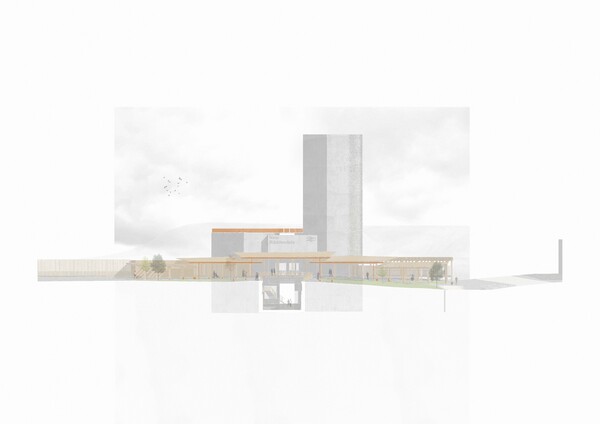A New Ribblesdale
The environmental impact caused by the cement industry is forever being exposed, with inconceivable destruction inflicted on both the natural landscape and atmosphere. Throughout this project a speculative future was established where the production of cement becomes abolished to achieve net-zero sustainability goals, posing the question ‘Can post-industrial landscapes evolve to benefit a contemporary society; creating a new industrialisation that is sustainable in every sense of the word?’
This question was explored through the site of an existing cement factory, in a small industrial town called Clitheroe in Lancashire. The toxic relationship between place and production was investigated, unearthing the detriment the Ribblesdale Cement Factory had imposed on the Ribble Valley Region. In a conscious effort to maintain economic stability within the region, a new sustainable industry was proposed which would replace the cement industry and provide the flourishing settlement with a sustainable materials palette.
From this, a masterplan for the New Ribblesdale settlement was proposed that sought to honour the industrial past of site which had laid the foundations of the region, encouraging an understanding of the contentious heritage of the landscape, whilst simultaneously displaying the progressive nature of the new settlement. The growth of the quarry, along with the 1960’s Beeching Cuts, had created a rift between Clitheroe and neighbouring settlement of Chatburn, disconnecting the two places, and through an improved infrastructural masterplan, a station was introduced within retained cement silos, reconnecting New Ribblesdale to the wider region.
Ideologies of agrarianism and local trading were also inherited from neighbouring settlements providing continuity within the area, preserving the rural character of the region, informing the development of a new market town centre. This new commercial space, inspired by the existing market space within Clitheroe, formed the heart of the new settlement, whilst giving purpose to the existing industrial site.


